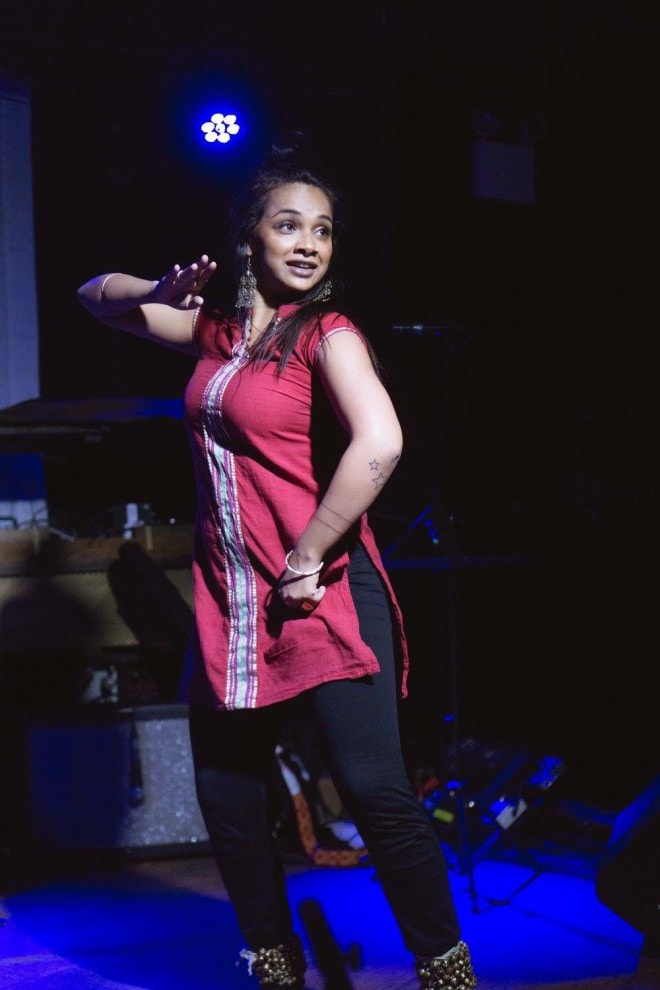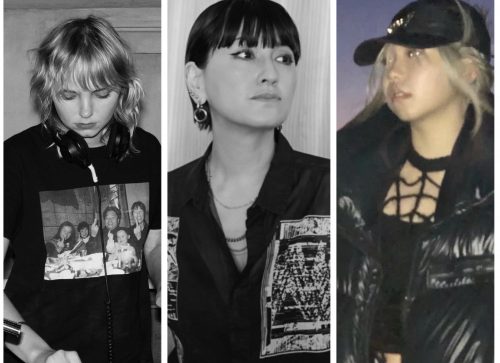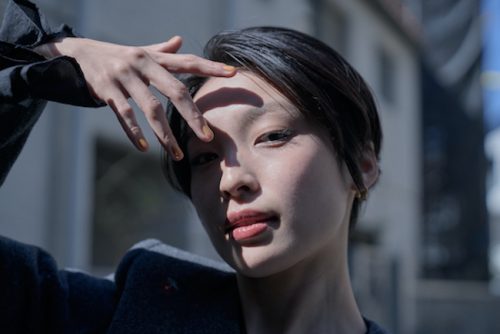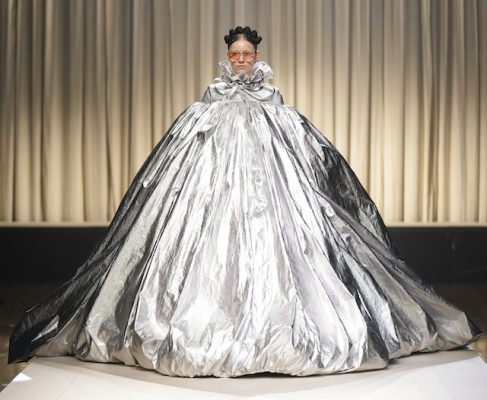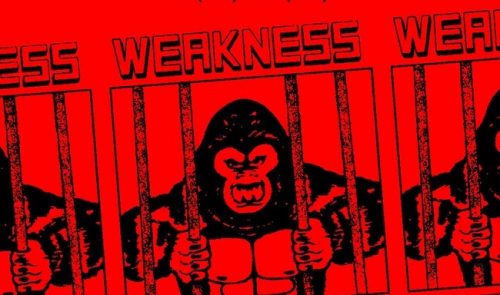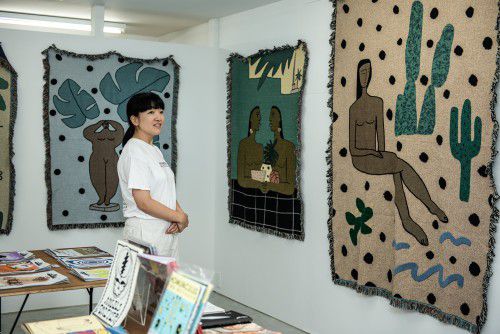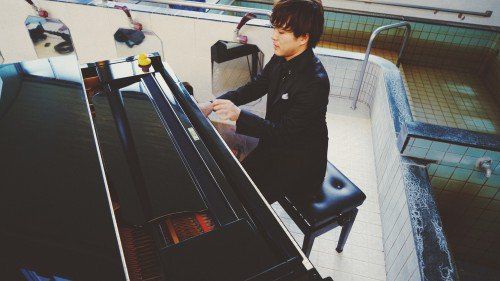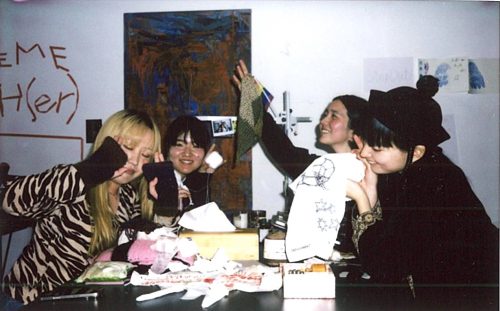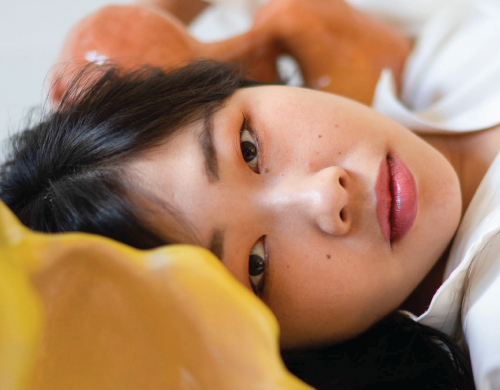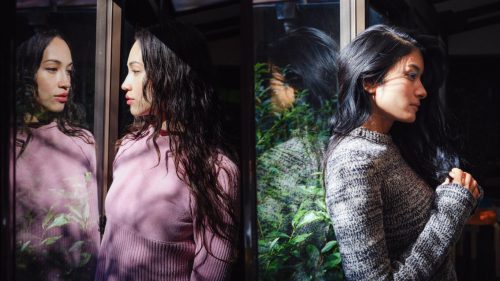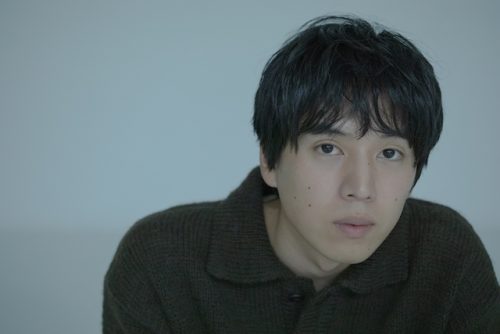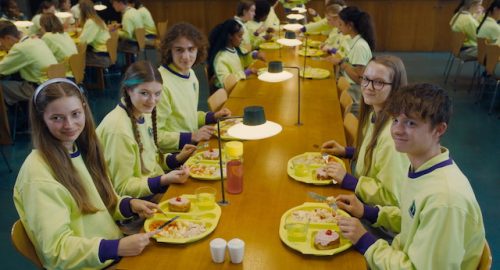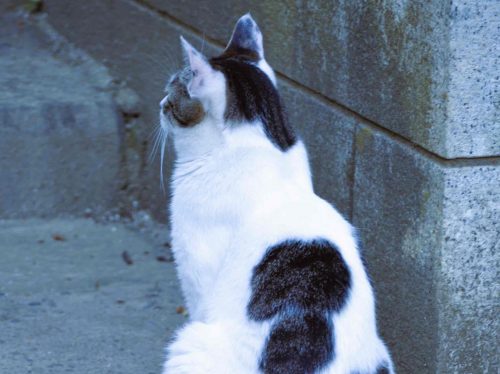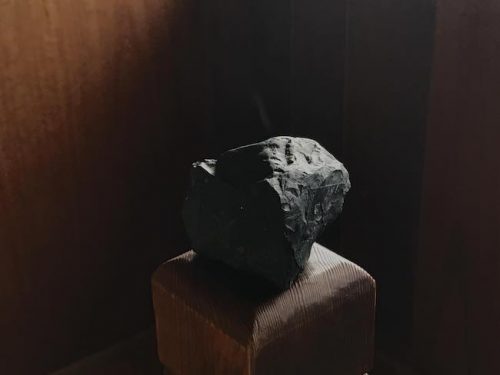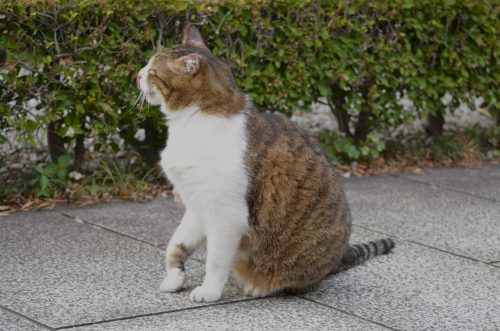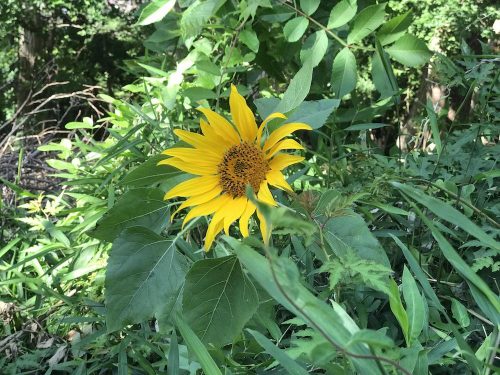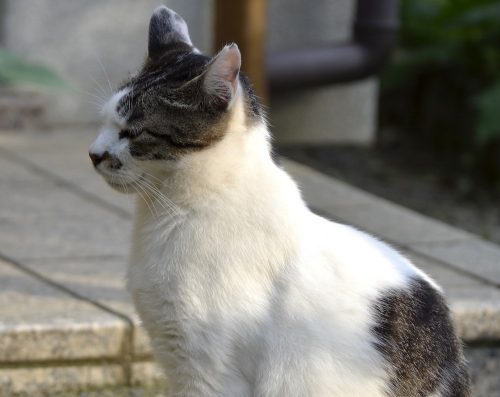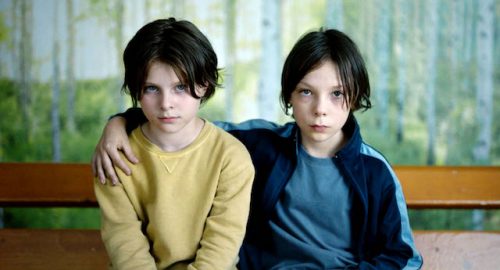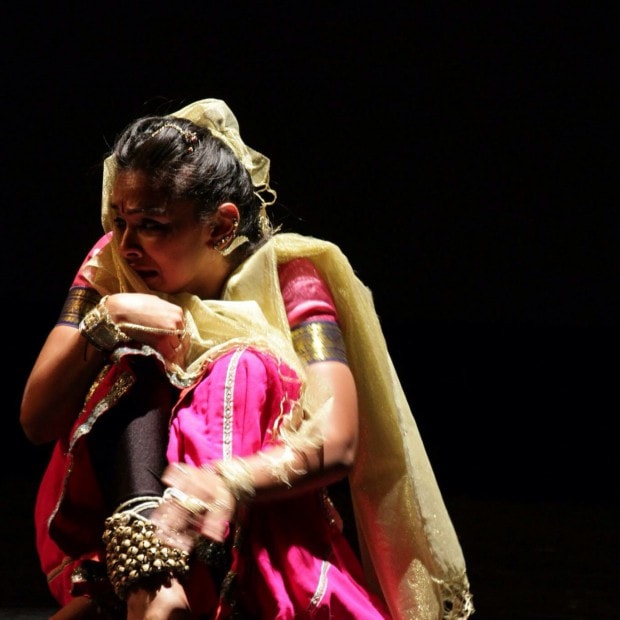
コンテンポラリーインディアンダンスの創設者として知られるブリンダ・グーハはニューヨークでダンサー・振付師・先生をしている。幼い頃からインドの伝統ダンスを学んだ彼女は新しいダンススタイルを通してアイデンティティを表現し続け、そのスタイルを自分のコミュニティーに共有している。ダンス、歴史、音と「動き」のいろいろな面について彼女に聞いてみた。
Known as the founder of Contemporary Indian Dance, Brinda Guha is a dancer/choreographer/teacher based in New York. She expresses her identity through a new style she has created with her learnings in Classical Indian dance, and continues to share that style with her community. We asked Brinda what certain aspects of dance such as history, sound and movement mean to her.
–まず、北インドのクラシカルカーサックダンスに触れたきっかけを教えてください。
Brinda「私はニュージャジーで母、マラビカ・グーハにダンスを教わりながらら育ちました。1986年に始めたダンススクールがセントラルNJ にあるのです。毎週日曜日は朝から夕方まで、それがスケジュールでした。最初はちゃんと習うことには興味がわかず、クラスが開催されていた場所までついていく形でした。時間が経つにつれて、音楽のリズムが私の想像力を発揮させ、スピン、フットワーク、ダンススタイルを通して自分を表現するようになりました。生徒になることが必然となり、そこから全てがはじまりました」
–First, can you tell us about your background in North Indian Classical Kathak dance?
Brinda : I grew up in New Jersey learning dance from my mother, Malabika Guha. She has a school in Central NJ that started in 1986. Every Sunday, all morning and afternoon – that was the schedule! At first I wasn’t interested in learning formally, I would just follow along to where classes were held. Over time, the rhythms penetrated my imagination and the spins, footwork, and style introduced itself into the way I expressed myself. It was inevitable that I would become a student, and it started there.
–母から学んだクラシックダンスをどうやってモダンなスタイルに変えていったのですか?
Brinda「小さい頃から典型的な移民ストーリーに当てはまる人が周りにたくさんいました。私は二人のインド系移民の親に生まれ、彼らはいつも自分達の文化のどの部分を保ち、どの部分を手放すか決めなければいけなかったのです。それだけで自分のアイデンティティを探ることが難しくなると分かっていました。大人になるまで自分のアイデンティティは複雑だが明確なんだということに気付かなかったです。私の表現には自分の文化と今の状況が交わっていること。その現実を発揮するようになってから、そのストーリーを自分の作品の中で探し始めることができました。すべての瞬間は融合され、すべての形は2つの世界が交わる包括的な分析であり、「完成」されたもののすべては国境を超えた人間のストーリーを包含する。何時間もの研究、リサーチ、指導、失敗や成功を重ね、自我から離れてみることで人々に理解してもらえて、私の人生を超えて続く新しいものを作ることができました」
–How did you create a modern style from what you learned from your mother in Kathak dance?
Brinda : The immigrant narrative was very loud for me as I was growing up. I was born to two immigrants from India who had to constantly decide what parts of their culture they’d keep and what parts they’d let go of. That in itself was commentary enough that confirming my identity would be hard. I didn’t realize until I became an adult that my identity is clearest in its complexity, that my expression included aspects of my heritage and aspects of my current circumstance. Once I embraced that reality, I was able to at least begin the process of finding that narrative in my work. Every moment is a fusion, every shape is a comprehensive analysis of two worlds coming together, and every “finished” item encompasses a human story that lives beyond borders. It took hours, lab work, research, mentorship, being wrong, being right, and stepping away from my ego to create new work that would resonate with people and have the potential to last beyond my lifetime.
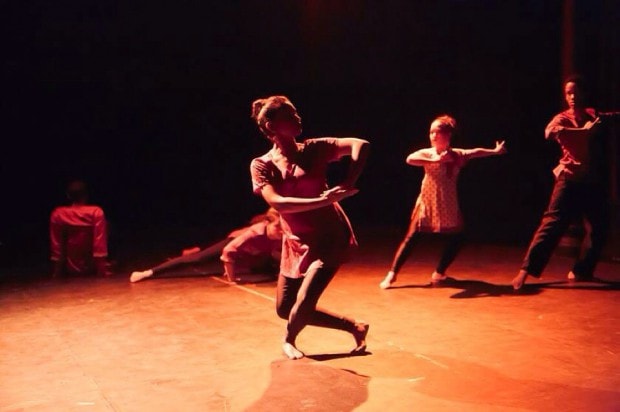
–自分の創り上げたダンススタイルを追求するに当たって学んだことは?
Brinda「自分のスタイルを創り追求していくうちに学んだことは全て上手くいくわけではない、ということ。失敗を通して一番学ぶことが多いということ」
–What are some things you have learned in pursuing your own style of dance?
Brinda : In creating and pursuing my own style of dance, I learned that not everything works! And that the greatest learning moments are in my failures.
–コンテンポラリーインディアンを教える時はどのようなテクニークやコツを生徒に教えているんですか?
Brinda「生徒にはラインを知ってからラインを壊さなきゃいけない、と教えています。コンテンポラリーインディアンを学ぶ際にはインドの伝統的なダンスを知ることが大切です。インディアンダンスはただでさえ複雑です。単なスタイルではなく、学びなのです。テクニークと歴史を明確に伝える物語が関わってきます。私にとって大切なのは、生徒達がコンテンポラリーインディアンはインディアンダンスをベースに創られたスタイルだと理解してくれること。今となっては私たちにもアクセスできるものであるが、もともとは歴史をルーツとした基礎の動きから創られたものなのです」
–What are the techniques and tips you most often give when teaching contemporary Indian?
Brinda : I teach my students that you have to know the line before breaking the line. It’s important, when studying Contemporary Indian, that you know about traditional Indian dance. Indian dance is complex in itself; it is a study, not just a style. It involves technique, history, storytelling of that history, and clarity in its communication. It’s important to me that my students understand that the work was created on a foundation of Indian dance, and that although it is now accessible to us, it was created on a strong foundation of an understanding of that is rooted in history.
–ダンスで、それとダンス以外で尊敬している人は?
Brinda「ミュージシャンからすごくインスピレーションを受けます。書き出すには多すぎますが、いろんな国の音を重ねて音楽を作っているアーティストには深く影響されます。それと、今まで習った先生達。彼らの発見と指導、共有し合った失敗や後悔をすべて尊敬しています。ニューヨークの人々、街、車、音、色からもインスピレーションを受けます。オプラ・ウィンフリーにもインスピレーションを受けています、彼女は本当に全部を理解しているよね」
–Who are some of your role models, in and out of dance?
Brinda : I am deeply inspired by musicians. There are too many to list, but the artists who are creating layers of music through world sound inspire me on a deep level. I am also inspired by my many teachers that I’ve had, their discoveries and mentorship, and their mistakes and regrets that they’ve shared. I am inspired by New York City, the people, the streets, the cars, the sounds, and the colors. I am also inspired by Oprah, because damn, that woman figured it out.
–振り付けをする音楽はどうやって見つけていますか?
Brinda「スポティファイ、最高です」
–How do you discover music to choreograph to?
Brinda : Spotify is my life.
–Brindaさんのダンスカンパニーは何をし、どこで発表しているんですか?
Brinda「私のダンスカンパニー、カラマンディール・ダンス・カンパニーはニューヨークのトライステートエリアで発表をし、コンテンポラリーインディアンダンスを踊っています。いろんなバックグラウンドを持つダンサーの集まりなので、コンテンポラリーインディアンのストーリーのの延長を伝えるチームです」
–What does your dance company do/where do they perform?
Brinda : My dance company, Kalamandir Dance Company, performs in the tri-state area and dances to work created in the Contemporary Indian language. We are a collective made up of dancers of diverse backgrounds, and we tell stories that are an extension of the Contemporary Indian human experience.
–ダンスの何が一番好きですか?他に好きなスタイルはありますか?
Brinda「ダンスは言語の代わりになるというところが一番好きです。すべての動きは私たちが生まれる前の歴史から来ていること。もう一つは、逆にダンスは多くの場合言語がないこと。動きは気持ちを作り、気持ちは私たちをアクションへと動かす」
–What is your favorite thing about dance? Do you have any other favorite styles?
Brinda : My favorite thing about dance is that it has language. All the styles of movement pull from a history that is beyond our existence. My other favorite thing about dance is that it often has no language. Movement creates feeling, and feeling drive us towards action.
–では、ダンスや体の動きはある意味言語であると思いますか?
Brinda「もちろんです。究極の非言語的言語です。私たちは自分の経験を体の中に抱えています。歩き方、笑い方、人を見る目や姿勢をまっすぐ保つ方法。動きを音と合わせると、深く人を巻き込む経験を創る事ができます。動きは普遍的です。ダンスは普遍的な動きの学びなのです」
–Do you believe dance/movement is a form of language?
Brinda : Absolutely. It is the ultimate non-verbal language. We carry our experiences in our body; the way we walk, the way we smile, the way we look at the people and the way we stand up straight. When we marry movement to sound, we create an experience that communicates deeply with a view and/or participant. Movement is universal. Dance is a study of universal movement.
–他の国で発表・ご指導したことはありますか?
Brinda「はい!勉強と舞台のためにたくさん旅行しました。フラメンコを学ぶためにスペインで2夏過ごし、ニューヨークに戻ってから10年間フラメンコのボキャブラリーを勉強しました。インドではマニプリ・クラシカルインディアンダンスを勉強してます。スペイン、イングランド、インドと日本で教えたことがあります。これからもキャリアが伸びるにつれ、いろんな国で指導をしたいです」
–Have you been to other countries to perform/teach?
Brinda : Yes! I have traveled a lot to study and perform. I lived in Spain for two summers to learn Flamenco, which led to a 10-year study in the vocabulary once I moved to New York. I also study Manipuri Classical Indian dance with my guru in India. I have taught in Spain, England, India and Japan, and hope to teach in more places as my career expands.
–最後に、知っておくべきニュースや舞台の予定はありますか?
Brinda「www.brindaguha.comで最新ニュースを御覧ください。SNSは@brindaguha, @kalamandirdance, @wisefruitnyc, & @solesofduendeで検索ください。いつも新しいものを創ろうとしていて、どんなものがコミュニティーにとって良いのか探し続けています。そのプロセスにはとても感謝しています。好きな事を仕事にできているので、とても恵まれています」
–Lastly, any news we should be aware of (upcoming performances, events)?
Brinda : Keep up with my work at www.brindaguha.com and my social media channels at @brindaguha, @kalamandirdance, @wisefruitnyc, & @solesofduende. I am constantly creating work and seeing what resonates with my community. I am grateful for the process, and I’m incredibly honored to have been able to create a life out of what I love to do.
Brinda Guha
www.brindaguha.com
text & edit Karin Horikoshi
